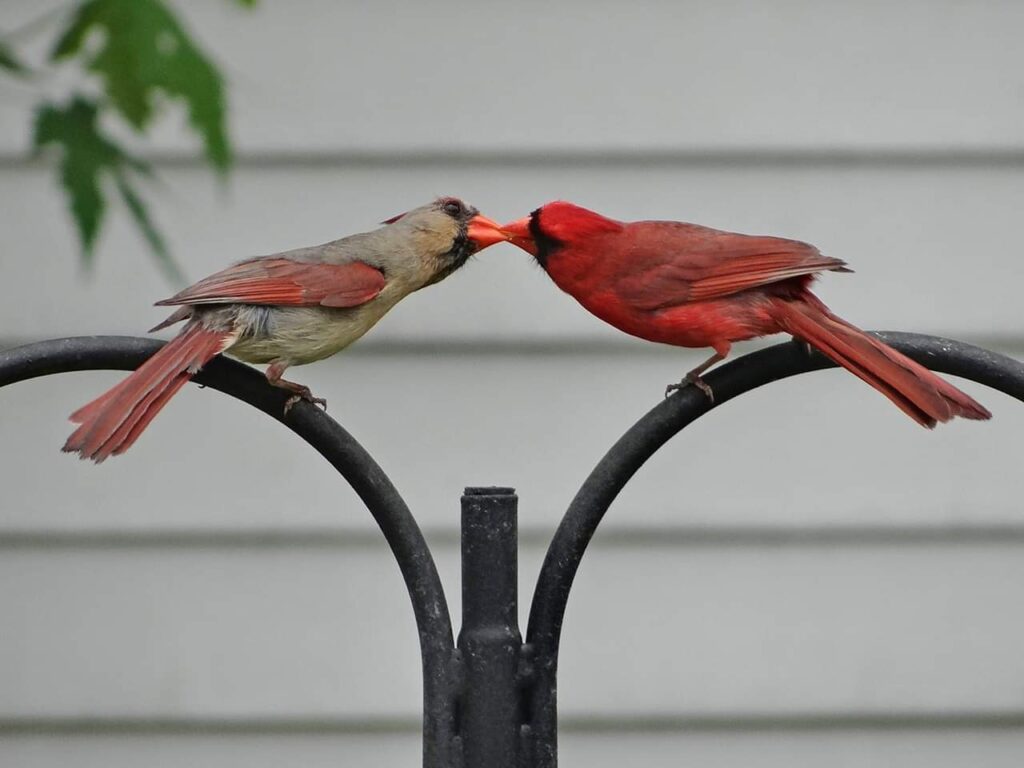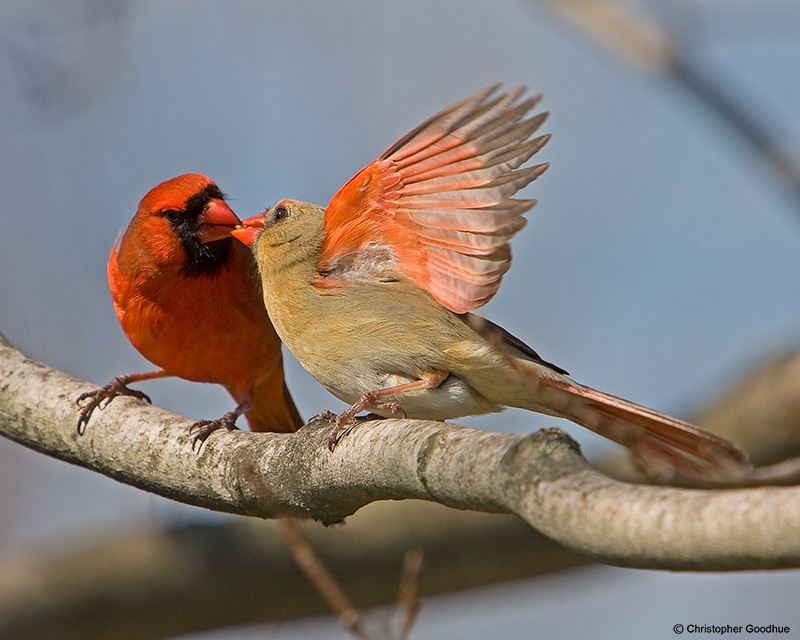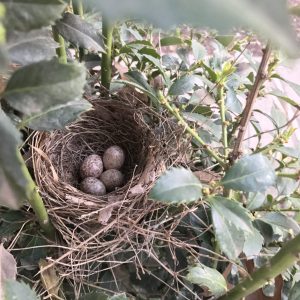
As the male Cardinal establishes his territory, he also courts the female by feeding her. This is one of the most rewarding behaviors to observe as you watch your feeders. Keep in mind that the Cardinal couple are the first at your feeders in the morning and the last at night. I have observed them as daylight is just breaking, coming to breakfast as a pair.

Once the Cardinal pair have bonded, nest building can begin. Cardinal nests are not created inside of nest boxes so there is nothing that you can offer in that regard. The pair search for potential sites together, carrying nest material in their beaks and calling back and forth to each other. They will use many types of trees and shrubs, including hawthorn, cedar, spruce, pines, hemlock, elms and sugar maples to name a few. Nests can be as low as one foot off the ground and have been also seen at 15 feet high.

The female Cardinal does most of the nest building, although the male may supply her with materials. The nest cup has four layers: coarse twigs covered inside with a leafy mat and then lined with grapevine bark and then grasses, stems, rootlets, and pine needles. The nest typically takes 3 to 9 days to build; the finished product is 2-3 inches tall and 4 inches across, with an inner diameter of about 3 inches. Cardinals usually don’t use their nests more than once. The outer layer of twigs are bent by the female until they are pliable and she is able to form them around her body.
Think of these building materials as you look at your yard and consider keeping them available, perhaps even offering them in one area where you can watch the female come to get supplies. I have a few areas in my yard that are designated stick pile places dedicated for this purpose.
For both reasons of shelter from inclement weather and for nest sites, consider planting a small group of evergreens to help Cardinals in the future years. You can go to https://www.nwf.org/Garden-for-Wildlife/About/Native-Plants for help in choosing plants that will work best in your habitat. Offering a consistent supply of quality seed and a fresh water supply will help your Cardinal couple achieve success in their nesting efforts. Enjoy your birds!
With thanks to Wayne Hoch, Christopher Goodhue and Judy Timmerberg for their photos.
